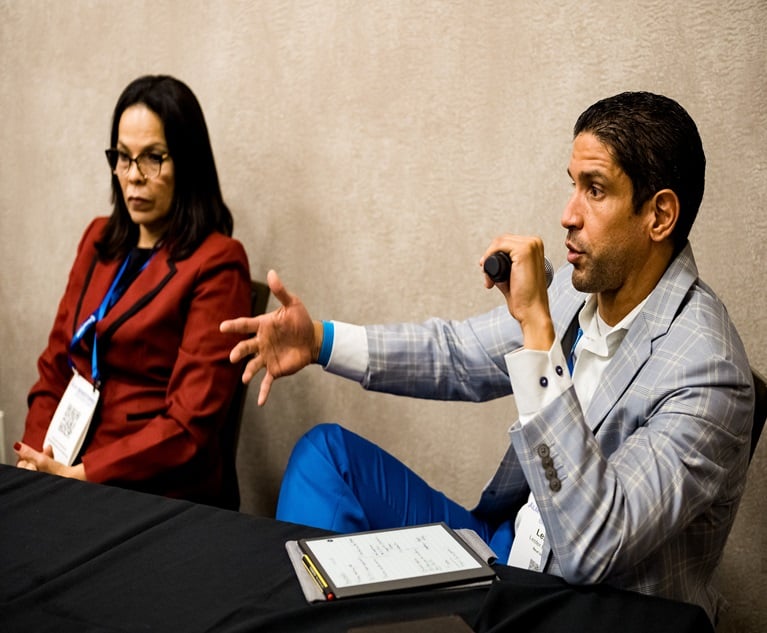 It is easy to understand that weare in a time of global economic and political change. However, itmay be harder to assess how these turbulent times can impact you,your clients, your agency or your E&O coverage. Many in oursociety play the “victim” role all too well. Today, as people andbusinesses look for alternative sources of revenue and blame othersfor their problems, these “victims” may make a claim, meritless orotherwise, against any business. Without insurance protection, ineither good economic times or bad, your clients would have to spendtheir own time and money responding to these claims, draining awaythe valuable resources they need to manage their businesses. And,more importantly, keep in mind that this advice applies to youragency, too, as a business operation. Many businesses experiencingdeclining revenues in the recession may decide that insurance andother risk management mechanisms are an unnecessary expense. Theseclients should be cautioned against this view, and offered guidanceto manage their insurance expenses. “Given the current economiccrisis, clients are in survival mode, seeking cost reductions atevery level and recognize insurance as one of their largest expenseline items,” said John Pierson, vice president of BB&TInsurance Services of Orange County, Irvine, Calif. “As a result,we are experiencing a tremendous amount of requests to shop themarket for the low-cost leader, as well as presenting the clientoptional limits, deductibles and coverage to reduce costs.”Insurance agents and brokers must not only help clients managetheir insurance expenses, but also warn them of the potentialrepercussions of reducing or eliminating coverages. The agent orbroker also must assess the financial strength of the carriersbeing used and make the appropriate disclosures to the clientregarding risk retention groups or surplus lines carriers. Thesewarnings should be in writing to protect the insurance agent orbroker from E&O claims. However, challenging economic timesalso bring opportunities in growing areas where insurance agentsand brokers can focus their efforts. During 2008, employment levelsdeclined in all industries except healthcare, education, certaintechnology-related niches and government. With the stimulus billspassed in Washington, industries that should benefit includehealthcare, infrastructure construction, alternative energy,technology-related fields (e.g., electronic medical records) andvarious vendors serving the government. These growing industrieswill have various insurance needs–some required by contract orlaw–so insurance agents should specifically target these niches.The impact of unemployment An obvious–and negative–trend is theincrease in the unemployment rate, which by March 2009 had climbedto 8.5 percent, the highest in 25 years. With employersimplementing significant reductions in personnel, and recordnumbers of applicants for the existing job openings, possibleallegations of race, age, sex and other type of discriminationclaims may increase. Workplace discrimination complaints filed withthe U.S. Equal Employment Opportunity Commission increased 15percent for its fiscal year ending September 2008. With expertspredicting the unemployment rate to rise to double digits,employment-related claims are likely to increase as well. Insuranceagents should advise clients to purchase employment practicesliability insurance if they have not already done so, to protectthemselves against these types of claims. Insurance agents andbrokers (and their insurers) are not yet experiencing an increasein E&O claims activity, but that is likely to change. The fearamong many in the industry is that the worst is yet to come, asclaims may not be made until after a party resolves his own claimor litigation (often unsuccessfully) with another party. Clientsmay have reduced their limits, eliminated insurance, or selected aninferior carrier to save money. Now, with a possible uninsured orunderinsured claim, some clients may charge their insurance agentor broker with negligent advice or make similar allegations. Thisdelay in a claim against the insurance professional may beproblematic if the agency has reduced its own E&O policy limitsto reduce expenses. “I believe this economic crisis will contributeto increased E&O claims against insurance agencies due to thecost-cutting measures many agencies are being forced to take,” saidScott Jones, principal, IMACO Insurance Services, Carlsbad, Calif.“For example, staffing reductions, elimination of services andconsumer demand for the cheapest price may mean inferior marketsand policy forms.” Business segments as varied as automobilemanufacturing, banking and finance, and travel and leisure areunder attack by government officials. No one can be sure whatindustry will be next to fall out of favor with the public atlarge, or be targeted by the government. As these businessesrespond to increasing public scrutiny or government demands, manymay blame their insurance agent or broker for the uninsuredfinancial repercussions of their business decisions. This may leadto a rush of new E&O claims against insurance agents andbrokers down the road. For this reason, insurance agents andbrokers must maintain their own E&O insurance to protect themagainst this eventuality. E&O coverage: asnapshot
It is easy to understand that weare in a time of global economic and political change. However, itmay be harder to assess how these turbulent times can impact you,your clients, your agency or your E&O coverage. Many in oursociety play the “victim” role all too well. Today, as people andbusinesses look for alternative sources of revenue and blame othersfor their problems, these “victims” may make a claim, meritless orotherwise, against any business. Without insurance protection, ineither good economic times or bad, your clients would have to spendtheir own time and money responding to these claims, draining awaythe valuable resources they need to manage their businesses. And,more importantly, keep in mind that this advice applies to youragency, too, as a business operation. Many businesses experiencingdeclining revenues in the recession may decide that insurance andother risk management mechanisms are an unnecessary expense. Theseclients should be cautioned against this view, and offered guidanceto manage their insurance expenses. “Given the current economiccrisis, clients are in survival mode, seeking cost reductions atevery level and recognize insurance as one of their largest expenseline items,” said John Pierson, vice president of BB&TInsurance Services of Orange County, Irvine, Calif. “As a result,we are experiencing a tremendous amount of requests to shop themarket for the low-cost leader, as well as presenting the clientoptional limits, deductibles and coverage to reduce costs.”Insurance agents and brokers must not only help clients managetheir insurance expenses, but also warn them of the potentialrepercussions of reducing or eliminating coverages. The agent orbroker also must assess the financial strength of the carriersbeing used and make the appropriate disclosures to the clientregarding risk retention groups or surplus lines carriers. Thesewarnings should be in writing to protect the insurance agent orbroker from E&O claims. However, challenging economic timesalso bring opportunities in growing areas where insurance agentsand brokers can focus their efforts. During 2008, employment levelsdeclined in all industries except healthcare, education, certaintechnology-related niches and government. With the stimulus billspassed in Washington, industries that should benefit includehealthcare, infrastructure construction, alternative energy,technology-related fields (e.g., electronic medical records) andvarious vendors serving the government. These growing industrieswill have various insurance needs–some required by contract orlaw–so insurance agents should specifically target these niches.The impact of unemployment An obvious–and negative–trend is theincrease in the unemployment rate, which by March 2009 had climbedto 8.5 percent, the highest in 25 years. With employersimplementing significant reductions in personnel, and recordnumbers of applicants for the existing job openings, possibleallegations of race, age, sex and other type of discriminationclaims may increase. Workplace discrimination complaints filed withthe U.S. Equal Employment Opportunity Commission increased 15percent for its fiscal year ending September 2008. With expertspredicting the unemployment rate to rise to double digits,employment-related claims are likely to increase as well. Insuranceagents should advise clients to purchase employment practicesliability insurance if they have not already done so, to protectthemselves against these types of claims. Insurance agents andbrokers (and their insurers) are not yet experiencing an increasein E&O claims activity, but that is likely to change. The fearamong many in the industry is that the worst is yet to come, asclaims may not be made until after a party resolves his own claimor litigation (often unsuccessfully) with another party. Clientsmay have reduced their limits, eliminated insurance, or selected aninferior carrier to save money. Now, with a possible uninsured orunderinsured claim, some clients may charge their insurance agentor broker with negligent advice or make similar allegations. Thisdelay in a claim against the insurance professional may beproblematic if the agency has reduced its own E&O policy limitsto reduce expenses. “I believe this economic crisis will contributeto increased E&O claims against insurance agencies due to thecost-cutting measures many agencies are being forced to take,” saidScott Jones, principal, IMACO Insurance Services, Carlsbad, Calif.“For example, staffing reductions, elimination of services andconsumer demand for the cheapest price may mean inferior marketsand policy forms.” Business segments as varied as automobilemanufacturing, banking and finance, and travel and leisure areunder attack by government officials. No one can be sure whatindustry will be next to fall out of favor with the public atlarge, or be targeted by the government. As these businessesrespond to increasing public scrutiny or government demands, manymay blame their insurance agent or broker for the uninsuredfinancial repercussions of their business decisions. This may leadto a rush of new E&O claims against insurance agents andbrokers down the road. For this reason, insurance agents andbrokers must maintain their own E&O insurance to protect themagainst this eventuality. E&O coverage: asnapshot
The rates for insurance agent and brokerE&O coverage do not seem to be increasing or decreasing.Despite the concern that E&O claims may increase in the nearfuture, many insurance carriers seem to be taking a “wait and see”approach toward loss results and possible rate changes. Just asbanks are using credit scores to determine who will receive loans,insurance companies also may tighten their underwriting standards.Insurance companies will target what they perceive to be the “best”accounts, such as those entities with comprehensive risk managementprograms. Agencies without effective risk management controls inplace may pay higher rates or discover that many insurers areunwilling to offer terms at any price. An issue many insuranceprofessionals and E&O insurers are facing is how to respond tothe decreasing sizes of their applicants (new business) and currentinsureds (renewals), relative to premiums charged and coveredexposures. Many agencies are experiencing significantyear-over-year declines in terms of commission income, premiumvolume handled, and headcount–the three common criteria upon whichmost carriers base their E&O premiums. For this reason, agentsmay expect to pay reduced premiums for their E&O coverage–andindeed, many are. Most E&O coverage is written on claims-madecoverage forms (“claims made” when referenced refers to “claimsmade and reported” policies rather than the less common “pureclaims made”) that may include prior acts coverage for the agency.Insurance carriers are being asked to provide prior acts coveragefor an insurance agency that may have been much larger in the past,but expect carriers to base their premiums on the current, muchsmaller, entity. Market pressure may influence individual insurersto take this approach, but charging an inadequate premium for theactual exposures, in the short term, may lead to long-term negativeconsequences for these carriers and, ultimately, the E&Oinsurance buyer. Eventually the math of losses paid out, comparedwith the premium collected, will result in higher loss ratios forthe insurance companies. When E&O carriers raise rates tocorrect for these losses, or withdraw from the market altogether,insurance buyers will ultimately pay the price in higher premiums.If an insured has been with the same carrier for a number of years,and was paying premiums when the entity was larger, the carrier mayweigh this during the renewal quote. The insurer may feel that ithas collected premiums relative to the exposure in prior years,especially if the account has been profitable over time. However,when the same agency asks for a first-time quote from a newcarrier, that insurer may be less inclined to offer a veryaggressive price. They will feel that they are being asked tocharge a much lower premium relative to the true exposure (i.e.,many years of prior acts for an agency that was once much larger).E&O insurance buyers should have their agent or broker solicitmultiple quotes, as insurance companies are in different stages ofthought on this topic, and this may result in much different finalquotes. As always, it is important for an insurance buyer to payattention to the E&O policy's terms and conditions. As agenciesand their clients decline in size, purchase a competitor, selltheir own business, merge with another entity, declare bankruptcy,or simply close their doors, some coverage features may come intoplay that would normally not warrant much attention. Let's look atsome of these features specific to insurance agencies.Addressing agency changes
In rough economictimes, one of the first expenses addressed by a business ispersonnel. With agencies that are eliminating positions due todeclining income, agents should pay attention to the E&Ocoverage form as to whether past employees will continue to beincluded as insureds under the policy. If the agency must respondto an E&O claim involving the work of a former employee, theagency will most certainly want this former employee's cooperationin the handling of the claim. Cooperation is greatly improved whenthat person is afforded insurance protection under the agency'sE&O coverage form. The agency should ensure that the definitionof insured includes anyone who “is or was” an employee or othercovered position so that individuals no longer employed are stillcovered for their past work that was performed for the insuredentity. When economically challenged, some agencies may decide tobuy, sell or merge with another entity. Each option presentsE&O coverage issues. Most E&O policies specifically addressthese “change in control” situations, and the insurance agent orbroker should be aware of the specifics before finalizing atransaction, to assure that there will be no gaps in coverage goingforward. If an agency is sold or absorbed by merger, some E&Opolicies stipulate that coverage ceases immediately going forward,the policy premium becomes “fully earned,” and the policy isnon-cancelable by either party. Coverage continues to apply for thepre-sale/pre-merger professional activities. Insurance policies aretypically non-transferable (i.e., they are not an asset to be soldto new owners). What should you consider if you are buying anagency or consolidating with another entity? Two coverage issuescome into play. First, the definition of “Who is an Insured” underthe policy typically applies only to those entities named on theinsurance declarations page. If a new entity is added, or thepost-merger entity has a new name, do not assume that coverageapplies to the new entity automatically. Some coverage formsinclude “predecessor firm” coverage that will protect the newlynamed entity if that entity controls the majority of the assets ofthe prior firm. It's best to investigate, before the purchase ormerger, how coverage applies and what steps will be required to addthe new entity to the existing coverage and provide run-offcoverage for the predecessor firm(s). Second, most E&O policieswill provide coverage for newly purchased entities or for thosecreated by merger only if the insurer is notified of the new entitywithin a certain timeframe, usually anywhere from 30 to 60 days.The insurer may make a premium charge for providing this additionalcoverage. This is especially important if the purchaser has assumedthe liabilities of the purchased entity, including potentialE&O claims. An agency owner may decide that it is best tosimply cease ongoing operations. Because E&O coverage istypically provided on claims-made coverage forms, the entity musttake steps to assure that insurance protection will continue tocover claims that may not be made until after the business hasceased operations. Generally speaking, under a claims-made policy,claims must be made before the policy's expiration date. Once thepolicy expires, no further claims may be reported, although manypolicies do provide a short (30 or 60 day), free extended reportingperiod, which gives insureds time to report claims made just priorto the policy expiration. For coverage beyond that, an extendedreporting period (ERP) must be purchased. An ERP provides anadditional period within which E&O claims may be made foralleged negligent acts which occurred during the coverage period(i.e., after the retroactive date and before the expiration of thepolicy). In some circumstances, the insurer may be willing (orrequired, in some states) to reinstate the limits of insurance ifan ERP is purchased. Common timeframes for ERPs range between 12and 60 months, with 12 being the minimum length offered. Somepolicies stipulate that the cost of the ERP will be determined onceit is requested. It is best to negotiate the cost and durationavailability of the ERP before purchase of the policy, if possible,to avoid surprises later. Another feature of ERPs to consider iswhen this optional coverage may be requested and purchased. Twotypes of approaches are most common: unilateral and bilateral. Witha unilateral ERP, the insured may have the right to purchase theERP only if the insurance company elects to cancel or non-renew thepolicy. In other words, if the insured decides to cancel ornon-renew, the ERP is unavailable. A bilateral ERP is available tothe insured if either party elects to cancel or non-renew. Thebilateral ERP is more favorable to the insured. A final featureabout an ERP to consider is that many carriers offer it for nocharge in the case of the death, total disability, or retirement ofthe insured. True in any economic climate, this feature can beespecially helpful to an agency if the owners decide to retire. Toactivate this feature, a common requirement is that the agency beinsured with the same insurance company for a minimum number ofyears, usually five. With economic and political conditionscreating uncertainty, insurance agents and brokers have anopportunity to advise their clients what this means for them. Tohelp minimize their exposures, insurance agents and brokers mightconsider targeting industries that may benefit both from thisdownturn and from stimulus efforts in Washington, rather thanfocusing on distressed industries. Examining one's own E&Opolicy coverage is imperative as well. Planning ahead, stayingfocused on broader industry trends, and perhaps negotiating betterterms and conditions of your E&O coverage can be key innavigating through this economic malaise.
Want to continue reading?
Become a Free PropertyCasualty360 Digital Reader
Your access to unlimited PropertyCasualty360 content isn’t changing.
Once you are an ALM digital member, you’ll receive:
- All PropertyCasualty360.com news coverage, best practices, and in-depth analysis.
- Educational webcasts, resources from industry leaders, and informative newsletters.
- Other award-winning websites including BenefitsPRO.com and ThinkAdvisor.com.
Already have an account? Sign In
© 2024 ALM Global, LLC, All Rights Reserved. Request academic re-use from www.copyright.com. All other uses, submit a request to [email protected]. For more information visit Asset & Logo Licensing.








